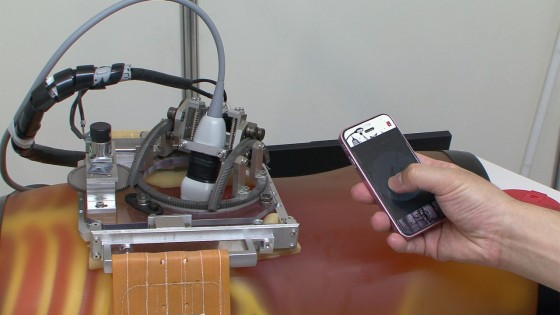
Robohub.org
Remote internal imaging robot helps doctors in emergency situations

This remote medical care robot for use in emergency situations, is under development by a research group at Waseda University, led by Dr. Hiroyasu Iwata.
“If a person receives an impact in an accident, there is a possibility that they could have internal bleeding. In emergency rooms, there’s a diagnostic method called FAST, using ultrasound imaging to check for internal bleeding. But that can’t be done until the patient reaches the hospital. So our idea is that this robot can be put on the patient in an ambulance, and while on the way to the hospital, it can be controlled by a doctor in a remote location. As there is ultrasound probe attached, this robot can be used to check for internal bleeding.”
This robot, which weighs 2.2 kg, can be attached to the chest area using a belt, and can be used anywhere as long as there is a network connection. So it could also be used in the home or remote areas.
To enable a physician at a remote location to operate the robot intuitively, it’s controlled using an iPhone, with the robot’s rotation and the ultrasound probe angle controlled by touch.
“The ultrasound probe is attached here, and as it moves, the ultrasound image appears like this. If there’s bleeding, that appears as black shadows like this. If the patient has internal bleeding, they’re in danger unless they get to a hospital. This system lets the physician know that.”
“One point about this robot is, you can change the probe angle freely, keeping the probe in contact with the body. So, even if the patient is moved, the robot moves with them. This means images can continually be sent to the physician at a remote location.”
“Before this robot can be used in emergency care, legal barriers must be overcome. So, what we’d like to do initially is use it for pregnancy check-ups. By doing that, if we make one more prototype version, we think the robot will become practical. In that case, we think this system could become practical within three years.”
tags: c-Health-Medicine, Prototype, Research




